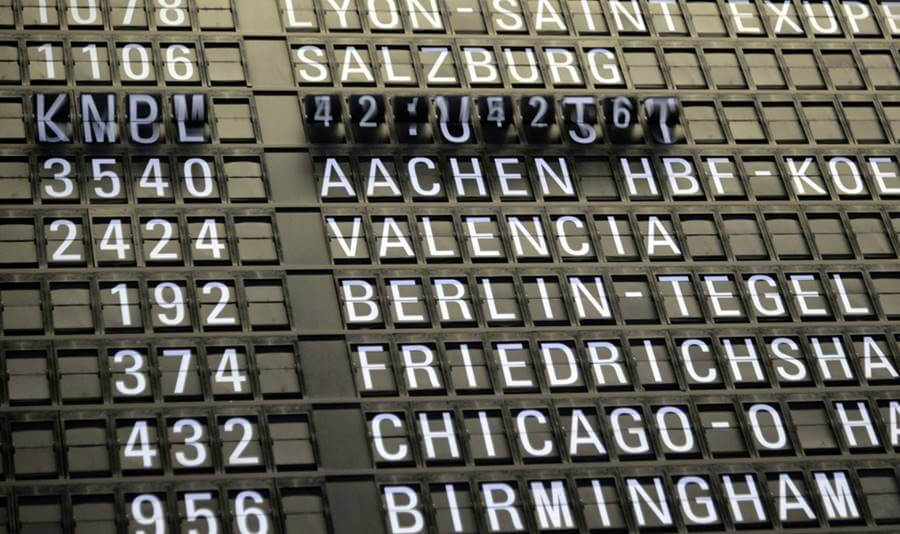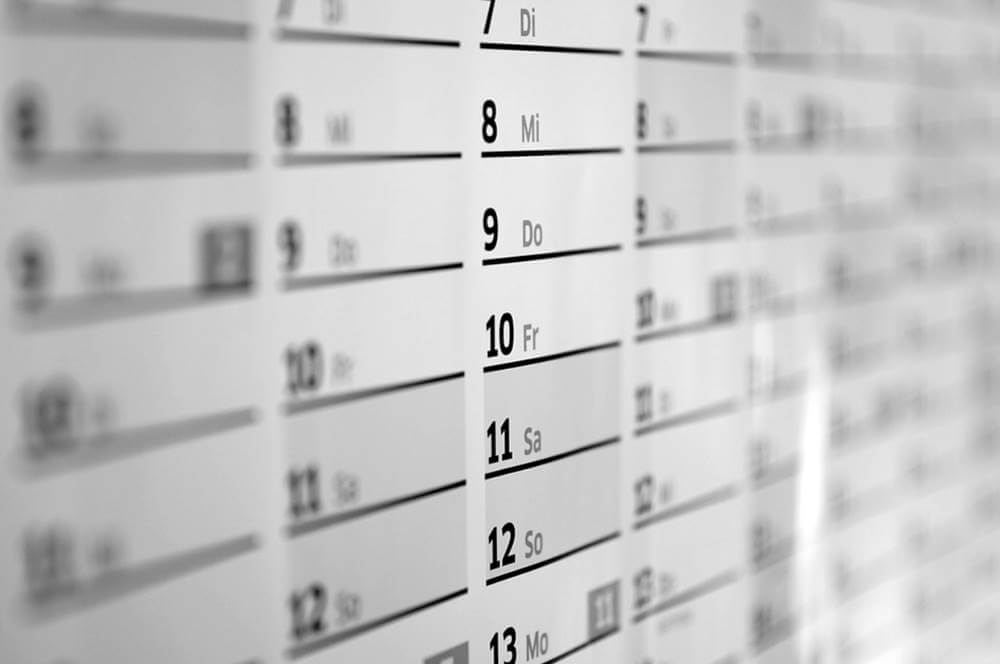- A cabin crew roster is a document that shows the scheduled working hours of a cabin crew. It usually has a list of all the crew members and their assigned duties and responsibilities. The schedule can be in any format, but it is most commonly in a table or spreadsheet form.
- The purpose of a cabin crew roster is to ensure that the correct number of crew members are scheduled to work at all times and to ensure that the crew members are properly rested.
- Common terms used in flight attendant scheduling include: turnaround, off, layover, reserve/standby, leave, paid vacation leave, unpaid leave, roster bid, and flight swaps.
A cabin crew roster schedule is a document that shows the working hours of a cabin crew. It usually has a list of all the crew members and their assigned duties and responsibilities. The schedule can be in any format, but it is most commonly in a table or spreadsheet form.
Also Read: 25 Best Travel Gear for Cabin Crews
Flight attendants play a vital role in ensuring the safety and comfort of passengers on flights. They are responsible for a wide range of tasks, from serving food and drinks to providing first aid and answering passengers’ questions.
While their duties may vary depending on the airline they work for, flight attendants typically work on a roster that includes a mix of early morning, daytime, evening and overnight shifts. This can make their work schedule very unpredictable, and they often have to travel away from home for long periods of time. However, many flight attendants enjoy the variety and challenge that this job provides.
Contents
- What is a cabin crew roster?
- Purpose of Roster Schedule?
- Common Terms used in Flight Attendant Scheduling
- Difference Between Short Haul and Long Haul Flights
- Video: Cabin Crew in Dubai Roster Reveal
- Video: Qatar Airways Cabin Crew Roster
- Frequently Asked Questions
- 1. What is a cabin crew roster?
- 2. How often do cabin crew have to travel?
- 3. What are some of the common terms used in a cabin crew roster?
- 4. What are some of the things that cabin crew need to be aware of when bidding for flights?
- 5. What is a day return?
- 6. What is a night stop?
- 7. What is a deadhead?
- 8. What is a reserve?
- 9. What is a standby list?
- 10. How can I find out more about cabin crew rosters?
- 11. What is the purpose of a cabin crew roster?
- 12. What are the different types of shifts on a cabin crew roster?
- 13. How is a cabin crew roster schedule created?
- 14. How can I find out my assigned shift on my cabin crew roster?
- 15. How can I bid for a preferred shift on my cabin crew roster?
- 16. What should I do if I cannot work my assigned shift on my cabin crew roster?
- 17. Can I swap shifts with another crew member on my cabin crew roster?
- 18. How do I bid for flights on my cabin crew roster?
- 19. How often does the cabin crew roster schedule change?
- 20. What should I do if I have a problem with my cabin crew roster schedule?
- 21. How can I view my cabin crew roster schedule?
- 22. Can I travel to my home country during my day off?
- Summary
 What is a cabin crew roster?
What is a cabin crew roster?
A cabin crew roster is a schedule that lists the times and days that each member of the cabin crew is scheduled to work. It is generally made up of a table or spreadsheet with the names of the crew members and their assigned duties.
The roster can vary in format depending on the airline, but it typically includes information such as the flight number, departure and arrival times, and the length of the flight.
Purpose of Roster Schedule?
The purpose of a cabin crew roster is to ensure that the correct number of crew members are scheduled to work at all times and to ensure that the crew members are properly rested. The cabin crew roster is typically created by the airline’s operations department and is usually based on input from the pilots and flight attendants.
The roster is then sent to the flight attendants for their approval. Once the roster is finalized, it is sent to the airline’s Dispatch department, which is responsible for ensuring that all flights are properly staffed.
Common Terms used in Flight Attendant Scheduling
It is important to know first about what are the common terminologies used by flight attendants during their monthly schedule. Please check out the terms and descriptions for each one below:
Turnaround
A turnaround is when an aircraft arrives at its destination, and then turns around and flies back to its point of origin. This usually happens within a few hours. Basically, if you are given a flight turnaround, it means that you don’t sleep in another destination to rest. You simply go back to your accommodation to rest.
Cabin crew have to be quick in between flights to clean the aircraft and prepare it for the next set of passengers. They also have to make sure that all the safety equipment is in working order. Turnarounds can be challenging for cabin crew, but they are an essential part of the job.
Layover
For those who travel regularly, the word “layover” conjures up images of long hours spent in sterile airport terminals. A cabin crew layover is basically a long stopover in a destination, usually for at least one night. Cabin crew members have to stay in hotels near the airport during their layovers.
While layovers can be tiring, they also give cabin crew members a chance to explore new places. Some airlines even offer their employees discounts on hotels and other activities during layovers. Layovers also offer a chance to try local cuisine and sample the nightlife. With careful planning, a layover can be an enjoyable break from the everyday grind of flying.

Reserve / Standby
When you are on reserve or standby, it means that you are not working a scheduled flight but are “on call” to work any flight that might come up. For example, if there is a cancellation or a change in the schedule, the airline may ask you to come in and work the flight. Being on reserve can be a bit unpredictable, but it can also be a great way to get extra hours and earn more money.
The downside is that you may have to work at odd hours and on short notice. But if you are flexible and don’t mind being on call, being on reserve can be a great way to make some extra cash.
During your reserved month, you can by on an Airport Standby or Home Standby.
- Airport Standby means that you have to be at the airport during your shifts in case you are needed to work a flight. You have to be in your cabin crew uniform and ready on-call.
- Home Standby means that you do not have to be at the airport during your shifts. You have to be at home when the airline will contact you if they need you to work a flight. This is a great option if you live far from the airport or if you have other commitments during your shift. You also don’t need to wear your uniform while at home and gives you the opportunity to prepare for a flight at the convenience of your accommodation.
Roster Bid
The Cabin Crew Roster Bid is a system that allows you to bid for the shifts you want to work. It’s a great way to get the hours you want and to have more control over your working life. But it can be confusing, and if you don’t know how to use it, you could end up with shifts you don’t want.
The first thing to understand is that the Roster Bid is NOT first-come, first-served. Just because you bid for a shift does not mean you will get it. The airline will look at all the bids and try to create the most efficient roster possible. That means they will look at things like seniority, skills, and availability when they are making their decisions.
Leave
A leave is defined as a period of time during which an employee is absent from work with permission. There are several types of leave that may be available to employees, including vacation leave, sick leave, and parental leave.
Leave can be taken for a variety of reasons, and the length of time may vary depending on the type of leave and the reason for taking it. In some cases, employees may be able to take unpaid leave or receive pay in lieu of taking leave. Cabin crew roster planning must take leaves into account in order to avoid disruptions to the operation.
- Paid Vacation Leave – Usually, cabin crew get 30 days of paid vacation leave in a year.
- Unpaid Leave – In certain scenarios, cabin crew can file for unpaid leave. This means you will not be paid a salary during the number of days that you are on unpaid leave.
OFF (Day Off)
Like regular employees, OFF is a day or days off from flying assigned to cabin crew in their rostered sequence. The OFF days are given so that cabin crew can have some time to rest and recover from the often long and tiring hours spent flying.
While on an OFF day, cabin crew are not required to be available for flying duties and are free to do as they please, within the constraints of their contract of employment.
Each airline will have different rules and regulations regarding what cabin crew can and cannot do on their OFF days, so it is important to familiarize yourself with your airline’s policies before taking advantage of your time off.

Flight Swap
In order to make sure that they are always at their best, cabin crew members are typically given a roster that outlines their work schedule for the upcoming month. However, sometimes unforeseen circumstances arise that require a change in the schedule.
For example, a flight attendant might need to swap shifts with someone else in order to accommodate a personal request. In these cases, it is important to follow the proper procedure for swapping shifts.
The request must be submitted to the supervisor or to the roster system. If the swap is approved, then the new schedule must be communicated to all of the affected parties, including the other flight attendants and the pilots. By following these steps, cabin crew can ensure that everyone is on the same page and that passenger safety is always a top priority.
Difference Between Short Haul and Long Haul Flights
When it comes to air travel, there are two general categories of airlines: short-haul and long haul. Short-haul airlines typically focus on flights that are under four hours in duration, while long haul airlines often specialize in flights that are eight hours or more. Of course, there are also many airlines that offer both short and long-haul flights.
Short-haul flights generally have a lower cost structure than their long haul counterparts, as they require fewer pilots and crew members and can turn around aircraft more quickly. In addition, short-haul flights tend to be less complex and have fewer regulations. Hence, for cabin crew, you will mostly have turnaround schedules during short-haul flights.
Long haul airlines, on the other hand, often have bigger aircraft, with larger seats and more amenities. They also tend to fly to more destinations around the world. For flight attendants, in this scenario, they get to have hotel layoves in the flight destination for them to recharge for the flight back to the original destination.
Video: Cabin Crew in Dubai Roster Reveal
Check out this vlog feature which features a flight attendant in Dubai, Abi Moore, who shares a roster reveal to give you an idea of what a roster is about. She gives a breakdown of the terminologies and explanations about her schedule and what it’s like: Check out this video below:
https://www.youtube.com/watch?v=mF6Wd1a7Quk
Video: Qatar Airways Cabin Crew Roster
Here’s a video by Twinkle Anand, a Qatar Airways flight attendant, where she talks about the schedule, how to bid for a flight and leaves, and things to know about the roster for this particular airline. We hope you find some helpful tips about this particular topic:
Frequently Asked Questions
Please check out these common questions about the cabin crew roster and scheduling system:
1. What is a cabin crew roster?
A cabin crew roster is a document that shows the working hours of a cabin crew. It usually has a list of all the crew members and their assigned duties and responsibilities. The schedule can be in any format, but it is most commonly in a table or spreadsheet form.
2. How often do cabin crew have to travel?
While their duties may vary depending on the airline they work for, flight attendants typically work on a roster that includes a mix of early morning, daytime, evening and overnight shifts. This can make their work schedule very unpredictable, and they often have to travel away from home for long periods of time. However, many flight attendants enjoy the variety and challenge that this job provides.
3. What are some of the common terms used in a cabin crew roster?
Turnaround: This refers to the time between a flight’s arrival and departure.
Layover: This is the period of time when a crew has no duties and can rest.
4. What are some of the things that cabin crew need to be aware of when bidding for flights?
When bidding for flights, cabin crew need to be aware of the following:
- The length of the flight
- The destination of the flight
- The time of day the flight is scheduled to operate
- The number of stops the flight has
- The type of aircraft the flight will be using
- The number of passengers on the flight
- The cabin crew complement for the flight
5. What is a day return?
A day return is when a cabin crew member returns to their base after completing a flight. This can happen if they are working on a domestic flight or if their airline has an agreement with another airline that allows them to fly back on their aircraft.
6. What is a night stop?
A night stop is when a cabin crew member stays at their destination overnight before flying back to their base the next day. This can happen if they are working on an international flight or if their airline has an agreement with another airline that allows them to stay on their aircraft.
7. What is a deadhead?
A deadhead is when a cabin crew member flies as a passenger on an aircraft. They don’t have to work on duty during the flight. Deadheading flights takes place in rare scenarios like when an aircraft needs to be ferried to another location or when a crew member needs to get to their destination in order to work on another flight.
8. What is a reserve?
A reserve is when a cabin crew member is on call to work any flight that might need extra crew. They may not be assigned to a specific flight but they need to be available during their shift in case they are needed. Being on reserve can be unpredictable and tiring, but it can also be exciting as you never know where you might end up flying!
9. What is a standby list?
A standby list is a list of cabin crew members who are available to fly at short notice. This can happen if there are last-minute changes to the roster or if there are no-shows for a flight.
10. How can I find out more about cabin crew rosters?
If you’re interested in finding out more about cabin crew rosters, the best place to start is by talking to your airline’s crew scheduling department. They will be able to give you more information about the different types of schedules that are available and how to bid for flights. You can also find helpful information online, such as on forums and websites dedicated to cabin crew.
11. What is the purpose of a cabin crew roster?
The purpose of a cabin crew roster is to ensure that there are enough crew members available to work on all the flights that an airline operates. It also helps to keep track of the different types of flights that crew members are scheduled to work on, and makes sure that they have the appropriate amount of rest between flights.
12. What are the different types of shifts on a cabin crew roster?
There are typically three different types of shifts on a cabin crew roster:
- Turnaround: This refers to the time between a flight’s arrival and departure.
- Layover: This is the period of time when a crew has no duties and can rest.
- Standby: This is when a crew member is on call to work any flight that might need extra crew.
13. How is a cabin crew roster schedule created?
A cabin crew roster schedule is typically created by the airline’s crew scheduling department. They use a software program to input all the necessary information, such as the flight times, destinations, and aircraft type. Once all the information has been entered, the software will create a draft schedule that can then be modified by the department.
14. How can I find out my assigned shift on my cabin crew roster?
The cabin crew roster is usually sent at around 2 weeks before the next month. You will have your full roster schedule for the next month beforehand. This gives you ample time to plan your activities during the next month.
15. How can I bid for a preferred shift on my cabin crew roster?
If you’re interested in bidding for a preferred shift on your cabin crew roster, the best place to start is by talking to your airline’s crew scheduling department. They will be able to give you more information about the different types of schedules that are available and how to bid for flights. Usually, there is already a system in place on how you can bid for your roster.
16. What should I do if I cannot work my assigned shift on my cabin crew roster?
If you are unable to work your assigned shift, the best thing to do is to talk to your airline’s crew scheduling department. They may be able to reassign you to another flight or give you a different type of schedule. If you have a valid reason for why you cannot work your shift, such as a medical emergency, they may also be able to accommodate you. However, as with work companies, there may be penalties and sanctions if you call in sick multiple times or you go absent. Please check with your airline company policies in terms of absence and sick leaves.
17. Can I swap shifts with another crew member on my cabin crew roster?
Yes, in most cases you can swap shifts with another crew member. However, you will need to get approval from your airline’s crew scheduling department first. They will need to make sure that the other crew member is qualified to work the shift and that there are no scheduling conflicts.
18. How do I bid for flights on my cabin crew roster?
If you’re interested in bidding for flights on your cabin crew roster, the best place to start is by talking to your airline’s crew scheduling department. They will be able to give you more information about the different types of schedules that are available and how to bid for flights.
19. How often does the cabin crew roster schedule change?
The cabin crew roster schedule usually changes on a monthly basis. However, there may be some changes that happen on a more frequent basis, such as when an airline adds or removes flights from their schedule.
20. What should I do if I have a problem with my cabin crew roster schedule?
If you have a problem with your cabin crew roster schedule, the best thing to do is to talk to your airline’s crew scheduling department. They will be able to help you resolve the issue and make any necessary changes to your schedule.
21. How can I view my cabin crew roster schedule?
The best way to view your cabin crew roster schedule is to log into the airline’s scheduling system. This can usually be done through the airline’s website. Once you’re logged in, you should be able to view your upcoming schedule. If you have any questions, you can always contact your airline’s crew scheduling department.
22. Can I travel to my home country during my day off?
Generally speaking, most airlines will allow cabin crew to take short trips away from their home base, as long as they do not exceed a certain number of days away from home.

Summary
Working as a cabin crew member can be challenging, but it is also very rewarding. The duties and responsibilities of a cabin crew member are many and varied, and they must be able to handle difficult situations while maintaining the safety and comfort of the passengers. Because of this, it is important for cabin crew members to have a good understanding of their work schedule and what is expected of them during their shift.
If you are already a cabin crew, your roster for the month may not be something that you prefer, but it is important to remember that you are not the only one who has a say in the matter.
One way to overcome the feeling of not liking your roster is to realize that at the end of the month, you will receive a new one.
It is also important to remember that you can always bid for flights and try to get a better schedule. If you are having problems with your current roster, the best thing to do is to talk to your airline’s crew scheduling department so they can help you resolve the issue.